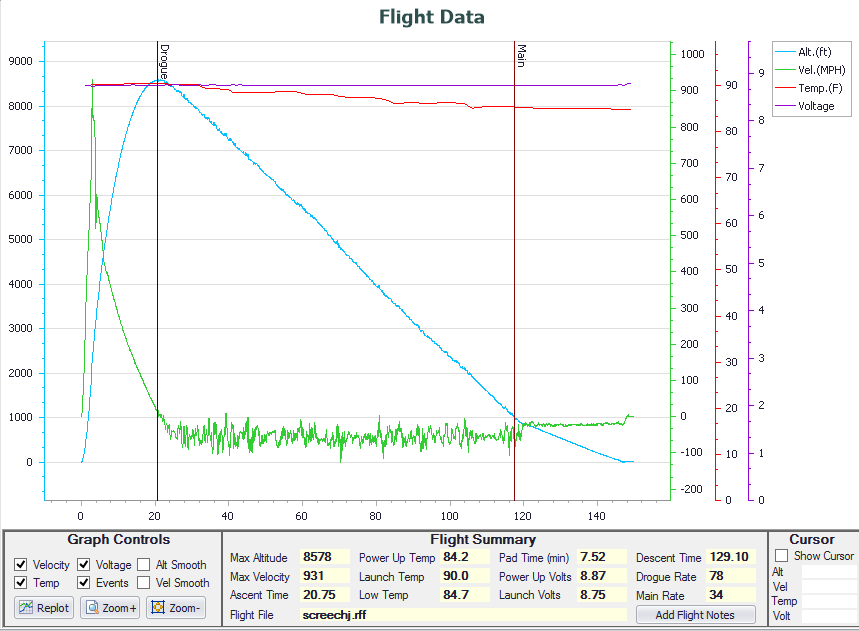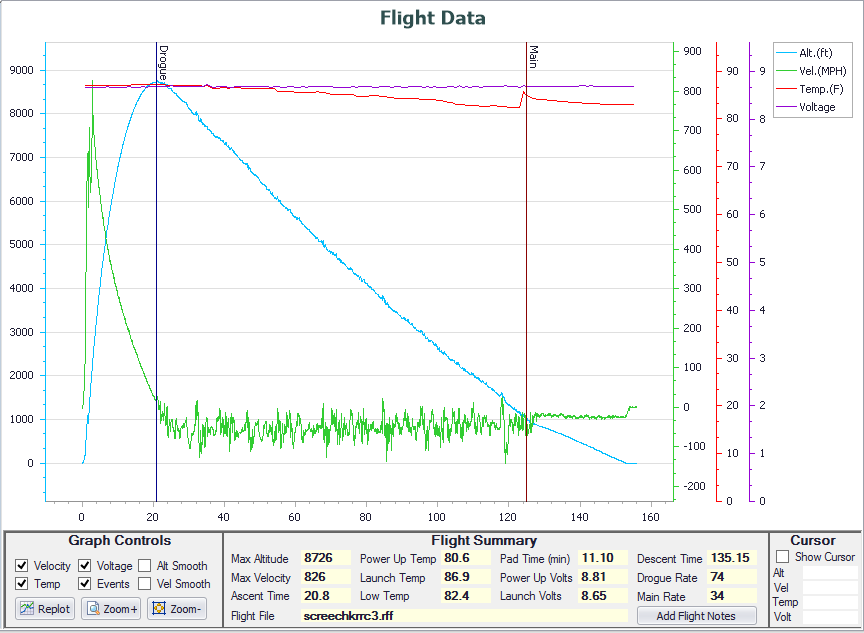MCriscione
Well-Known Member
- Joined
- Jul 9, 2015
- Messages
- 302
- Reaction score
- 18
For what it's worth my 4" dx3 only required .8 grams of black powder to separate the drouge. I have not yet tested the main, but I think I'm only going to fly with one or two shear pins as I do not think it should require more then that and at most I'm thinking 1.2 grams bp. All this is in a 4" rocket. At 2 grams in a 2.6" rocket I think you are over charging. Have you ran a bp calculator to figure out how much bp you need?
Mendal, yes, I have used 3 different bp calculators to estimate what I would need. It's possible that we have slightly different situations here, but even so, I'm surprised that .8g provided separation for you. You must have had really good containment and a fast burn. That's awesome! I'm guessing that you didn't have shear pins on your drogue separation. I may not need them or use them, but I'd like to test them. Based on those same online calculators, for your rocket, 3.9 ID and around what, maybe 21" pressurized length in front of the centering ring, it looks like a .8g charge would result in only about 6.5psi, which would be far too small to break my shear pins. In addition, I have a 54mm motor mount here, rather than a 38mm (like yours?) so the pressurized airframe length (when I'm flying a 38mm motor with an adaptor) is a bit longer than yours (although still a smaller diameter).
[It was interesting comparing these two. I had realized the Super DX3 was fatter, 4" vs 2.6", but I hadn't realized it wasn't scaled. It's only 3.5" longer! I could still fit it in the back of my car!]
As I mentioned, I figured about 25 psi is a good target. But let's do the math, as I haven't myself yet. The max shear strength (read 'required breaking force') for a #2-56 nylon machine screw is approximately 46lbs (https://www.feretich.com/rocketry/Resources/shearPins.html) and I have 3, so 138lbs (minimum would be 31*3=93lbs). The internal diameter of the rocket is 2.56", which is a cross-section area of 5.15". 138lbs / 2.15in^2 = 26.79 lbs/in^2. Looks like I may have actually underestimated my target pressure a bit. (The minimum required force may be as low as 18.06psi.)
I'm not going to get into actually deriving the psi developed from a particular volume (weight) of bp, I'll leave that to the calculators, but I estimated about 28" worth of airframe volume to fill, resulting in a required charge of approx. 1.85g. I rounded up to 2g to account for coupler friction and to get the chute out. It all comes down to the actual ground testing though. Will it break the pins? Will it break the harness? Will the whole thing fly across my back yard? Weather dependent, we'll see later this evening.
Last edited:







 Oh well, they weren't going to fly on the L1 attempt anyway.
Oh well, they weren't going to fly on the L1 attempt anyway.![FB_IMG_1495641325093[1].jpg FB_IMG_1495641325093[1].jpg](https://cdn.imagearchive.com/rocketryforum/data/attachments/233/233659-7c758457ef57ca16055ab9da56848b8e.jpg)

![FB_IMG_1495641283333[1].jpg FB_IMG_1495641283333[1].jpg](https://cdn.imagearchive.com/rocketryforum/data/attachments/233/233660-8ed71bb6a87c58ef52b09bc36dc5b1f2.jpg)
![FB_IMG_1495641289783[1].jpg FB_IMG_1495641289783[1].jpg](https://cdn.imagearchive.com/rocketryforum/data/attachments/233/233658-358aca3d1870bac69f97baccb8ab29d4.jpg)
